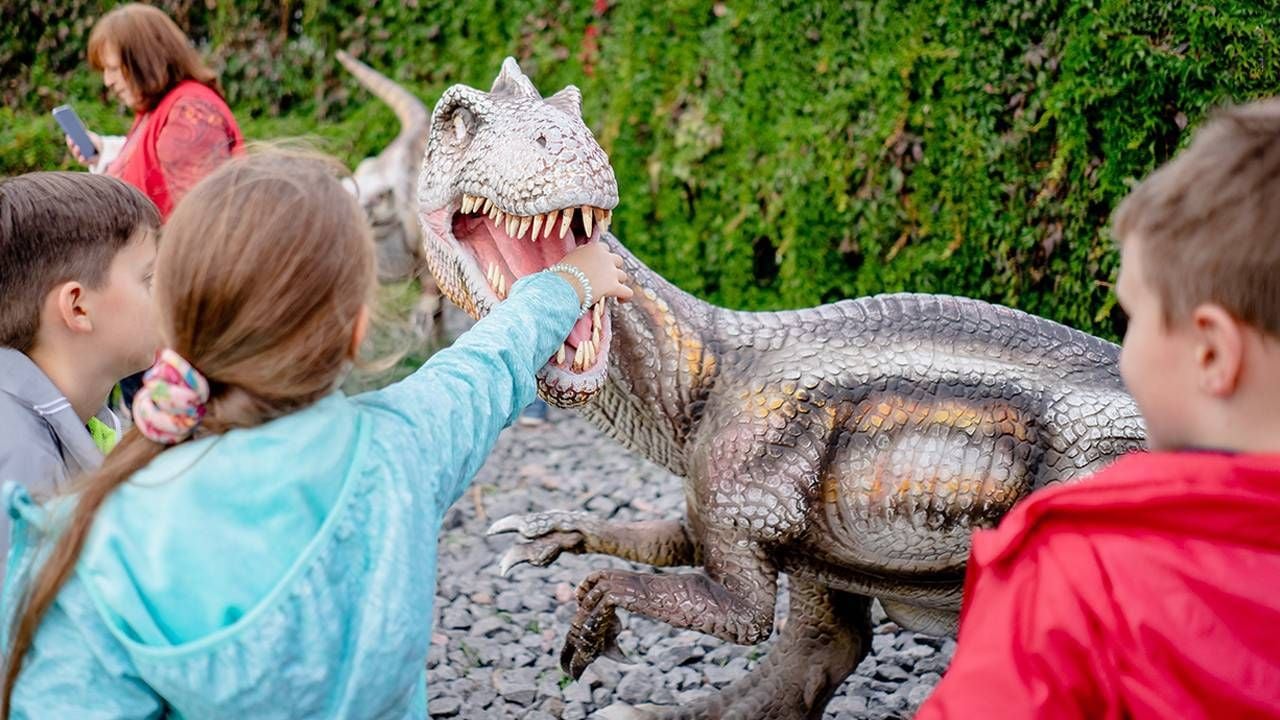Children's Museums Still Lead the Way to Wonder
A visit to the Children's Museum of Indianapolis is a reminder to this writer, now with her grandchildren in tow, of the joy of this educational experience
The Victorian carousel on the fourth floor of the Children's Museum of Indianapolis hadn't changed a bit in 34 years. The carved wooden horses, painted white, brown and black, continue to chase each other in an eternal steeplechase, while kids cling to their poles as they gallop up and down, around and around.

In 1988, when I was researching my first book, "Doing Children's Museums" (Williamson 1989), which was also the first book about children's museums, the Children's Museum of Indianapolis was the first, biggest and best museum in the world conceived and designed for children from birth to 12.
Parents and grandparents still need the freedom to follow, not lead, children as they explore.
It still is. Now, I'm back, with another litter of kids, this time my three eldest grandchildren, ages four through eight — and their mom, my eldest, whom we could barely pry off that carousel when she was six.
Three decades ago, the very idea that museums were places for hands-on learning was new and surprisingly controversial. Now, it's standard: from art to artifacts, many types of exhibits at many types of museums have hands-on components that let you feel the textures the artists painted or drop things under controlled conditions instead of just reading about gravity.
The Hands-on Museum Movement
The essentials of the hands-on museum movement have only been reinforced by educational theory, not to mention preschooler practice, since the 1980s.
Children still need settings where they can explore new ideas and things without constantly asking for permission. Parents and grandparents still need the freedom to follow, not lead, children as they explore. And everybody needs the endless creativity of museum exhibits that translate science and cultural concepts to engaging experiences that let kids learn on their own terms.
Throughout it all, the Children's Museum of Indianapolis continues to lead the movement it helped found in 1925. When my husband and I road-tripped from our home north of Chicago to central Indiana, our daughters tumbled out of the minivan to run into the museum and clamber over the carousel, explore the little wooden houses in an adjacent play village, and see how corn turns into money via Midwestern agricommerce.
All that is still there, and more. We trekked to the museum partly to see the latest expansion of its Dinosphere exhibit and partly because I think every child deserves to visit as many children's museums as they can, as often as they can, and we're behind, thanks to the pandemic. The carousel spun, the kids clung and I saw in them all the visits we had and will have.
A Love for Dinosaurs
The latest version of Dinosphere opened in March and showcases the work of its own (mainly woman-led) paleontology staff.
The exhibit sinks visitors back in time as they walk down, down, down past three-story sauropod skeletons into a prehistoric world, the floor shuddering under the thundering footsteps of an unseen, but clearly ominous, creature. Visitors can trace the length of the sauropod by running their hands along a textured band that borders the entryway to the exhibit.
On the wall behind the unseeing skeleton, high above the mural of a sweeping prehistoric plain populated by wandering dinos, a continual video loop of a sign language interpreter welcomes hearing-impaired visitors.
Turn the corner, ducking through foliage replicated from fossils of the very plants the dinosaurs ate, and you're under the domed sky that arches over a ring of dino dioramas. An occasional screech overhead warns of danger in the skies. Kids can crawl through a knee-high tunnel and pop up under a clear dome in the middle of one exhibit, putting themselves in the middle of the dino action – and well out of reach of pesky adults.
In an alcove where kids are invited to a simulated dig, a slice of hillside both shows the depth at which dinosaur bones are buried and enables children to scrape artifacts from the vertical surface —which actually happens a lot in real life.
And our six-year-old joyfully examined every corner of the miniature village, from store to treehouse, just as her aunts did thirty years ago.
Real palentologists work with real fossils in the real lab that occupies one whole wall of the museum. Its wide glass windows open so kids can hang out with the paleontologists and ask them about their favorite dinosaurs — and share about their own.
Children ages three to eight are often fascinated by dinosaurs as a blend of superhero and alpha character that embodies everything that children that age aren't: powerful, fearless and unapologetic.
"It's a very typical phenomenon, and it has been for ages," said Doris Bergen, distinguished professor emeritus at Miami University in Oxford, Ohio and a renowned expert in early childhood development, play and education. Dinos occupy one end of a motley spectrum of characters that enable kids to fantasize about power, with fairies anchoring the other.
Dinosaurs fascinate because there's an ever-expanding well of trivia about them, which puts kids on an even keel with parents, who must keep up with the latest discoveries just to hold up their end of the dinner conversation, explained Bergen.
"Children elaborate on them a lot," she said. "They draw on them and pretend about them and these creatures become your ability to feel more powerful in your world and be involved in exciting adventures, from the safety of home or school. It's very comforting to know that school will have some scary things, but I have my princess or dinosaur friend to help me."
Encourage Your Grandchildren's Interests
Fortunately, the museum dinosaurs stayed put when we reluctantly left them to introduce our little herd to the rest of the museum. Our eight-year-old happily settled in at an interactive archeological dig in the exhibit about Greece. Our four-year-old predictably fixated on the chance to "drive" a combine down a video crop field under a wide Midwestern sky, twirling the steering wheel with abandon while virtually mowing down something golden and ripe. And our six-year-old joyfully examined every corner of the miniature village, from store to treehouse, just as her aunts did thirty years ago.
The beauty of children's museums is that you can let them follow their interests, wherever that takes them (assuming you can keep up).
That's exactly the point, said Bergen. Let the kids be obsessed with dinosaurs, trucks, animals or whatever engages their hearts and minds. Children's museums are designed to let kids take the lead.
"Parents (and grandparents) should go with it, in the sense of encouraging their interests," said Bergen. "It's a phase in which they learn everything they can about the topic. The best thing you can do is encourage interest in a particular thing and also a range of experiences so they gain interest in a lot of things. You'll be amazed at how detailed they get but also know that this is a phase. It's not the same thing they'll be talking about when they're ten."


